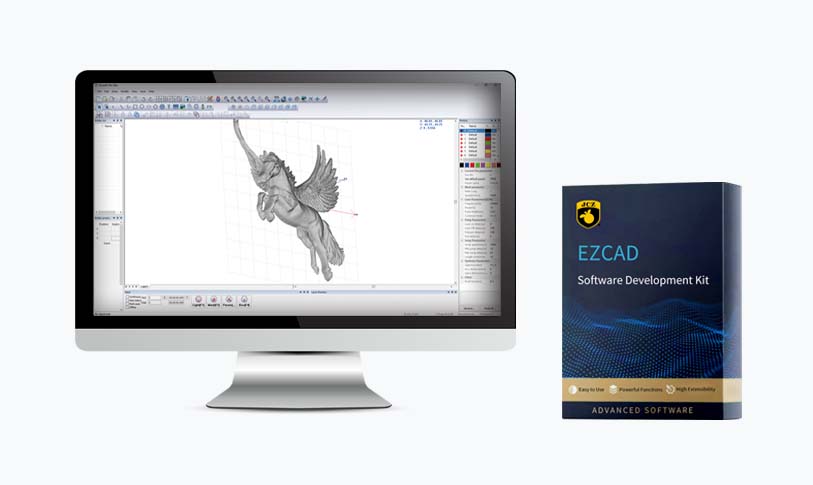[fiber vs co2 laser]A Comprehensive Comparison of Fiber and CO2 Lasers: Understanding Their Advantages, Applications, and Choosing the Right Technology for Your Needs
****
In recent years, laser technology has revolutionized various industries, from manufacturing to medicine. Two prominent contenders in the laser world are fiber lasers and CO2 lasers. Both types offer unique advantages and cater to different applications, making it essential for businesses and practitioners to understand their differences. This article aims to provide a comprehensive comparison between fiber and CO2 lasers, examining their characteristics, applications, and criteria for selection to help businesses make informed decisions.
Understanding Fiber Lasers
Fiber lasers generate light by passing electrical current through a doped optical fiber. This fiber captures and amplifies the light produced, resulting in a highly focused and powerful laser beam. The advantages of fiber lasers include:
1. **Efficiency**: Fiber lasers are known for their high energy efficiency, often exceeding 25%. This translates into lower operational costs and reduced electricity consumption. 2. **Maintenance**: Fiber lasers have fewer moving parts and do not require alignment or optics adjustments, ensuring lower maintenance costs and time.
3. **Beam Quality**: The beam quality in fiber lasers is superior, providing a smaller focal point and allowing for more precise cutting and engraving. This makes them particularly suitable for intricate designs and materials with tighter tolerances.
4. **Material Versatility**: Fiber lasers are effective for cutting materials like metals, and they can efficiently handle reflective materials such as copper and brass, which can be challenging for other laser types.
5. **Compact Size**: Fiber laser systems are often more compact than CO2 systems, making them easier to integrate into existing workspaces.
Understanding CO2 Lasers
CO2 lasers operate by stimulating a gas mixture of carbon dioxide, nitrogen, and helium, which produces a far-infrared laser beam. CO2 lasers provide several notable features:
1. **Performance with Non-Metals**: CO2 lasers excel at cutting and engraving non-metallic materials, such as wood, acrylic, and glass. They can produce cleaner cuts on organic materials due to their longer wavelengths.
2. **Cost-Effectiveness for Specific Applications**: CO2 lasers often have lower upfront costs and can be highly effective for specific applications — particularly those that do not require extreme precision or speed.
3. **Thicker Material Capability**: For some applications, CO2 lasers can cut thicker materials more efficiently than fiber lasers, particularly in laser cutting scenarios involving non-metals.
4. **Established Technology**: CO2 lasers have been used for several decades, and many industries have developed techniques and processes around this technology, resulting in a wealth of knowledge and best practices.

A Comprehensive Comparison of Fiber and CO2 Lasers: Understanding Their Advantages, Applications, and Choosing the Right Technology for Your Needs
Applications of Fiber and CO2 Lasers
Both fiber and CO2 lasers have found their niche in different industries:
– **Fiber Lasers**: Widely used in the metal fabrication industry for cutting, welding, and marking. They are popular in automotive, aerospace, and electronics manufacturing due to their precision and efficiency.
– **CO2 Lasers**: Commonly used in woodworking, signage, medical applications, and textile industries. Their ability to handle a wide range of non-metals makes them invaluable in these fields.

A Comprehensive Comparison of Fiber and CO2 Lasers: Understanding Their Advantages, Applications, and Choosing the Right Technology for Your Needs
Choosing Between Fiber and CO2 Lasers
When deciding which laser technology to employ, several factors should be considered:
1. **Material Type**: If your primary materials are metals, particularly reflective metals, a fiber laser may be your best choice. Conversely, if you work with wood, acrylic, or other non-metal materials, CO2 lasers would be more effective.

A Comprehensive Comparison of Fiber and CO2 Lasers: Understanding Their Advantages, Applications, and Choosing the Right Technology for Your Needs
2. **Precision and Speed**: For applications that require high precision and cutting speeds, fiber lasers generally outperform CO2 lasers. However, for lower precision needs or thicker non-metal materials, CO2 may be sufficient.
3. **Operational Costs**: Assess ongoing operational costs, including electricity, maintenance, and material wastage. Fiber lasers tend to be more energy-efficient, while CO2 lasers may incur higher maintenance costs over time.
4. **Budget**: If initial investment is a concern, CO2 lasers may offer a lower entry price, while the long-term benefits of fiber lasers might offset the initial hit.
Conclusion
Choosing between fiber and CO2 lasers hinges on material types, required precision, and operational costs. Understanding the specific applications and benefits of both technologies will empower businesses and practitioners to make informed decisions that align with their needs. As laser technology continues to evolve, both fiber and CO2 lasers will remain integral players in the industry, each carving out their niche based on their unique characteristics.pulsed laser power meter
